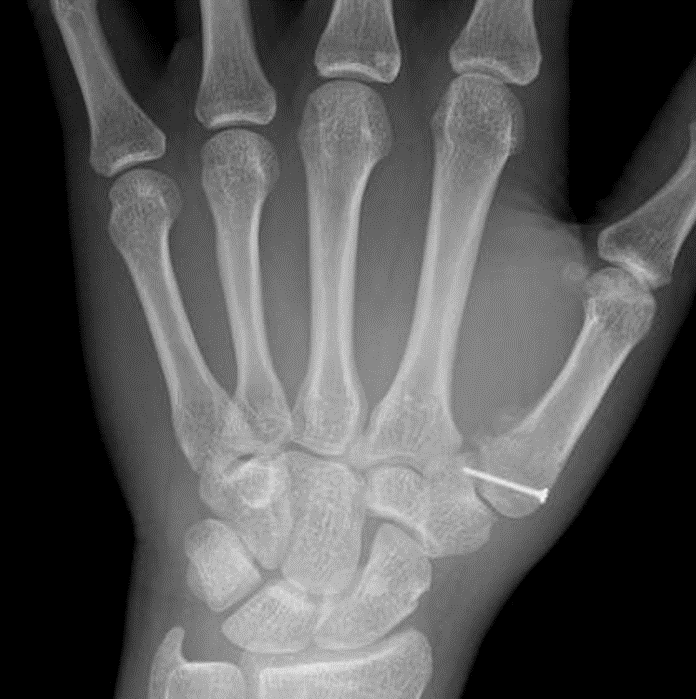

These fractures are reduced and immobilized and the severity of the fracture determines how the fracture site is treated. If the immobility period is extensive, there will be more “collateral” involvement of the entire involved limb.īennett fractures usually occur when the thumb is partially flexed and there is large axial load applied to the thumb (i.e. This protocol would include exercises that involve the entire arm and core.
BENNETT FRACTURE FULL
Today, many and most out-patient Physical Therapists can develop and implement a treatment protocols that are geared at restoring full function and use of the injured hand. In the past and in certain settings, Occupational Therapists were the providers of rehabilitation services for any upper extremity injury. The entire limb can be negatively affected. When the thumb is immobilized for a long period of time (6-8 weeks) the bone heals well, but there can be detrimental changes to the muscles, joint capsules and articular cartilage. The period of immobility is longer if surgery is not performed therefore many doctors choose to perform a surgery to reduce the time of immobility. The surgeon will fixate the injury to within 1mm of the original bony anatomy because it has been determined that this is needed to enable full return of function and not pre-dispose the injured joint to future arthritic changes and pain.įollowing a period of immobility, Physical or Occupational Therapy is started to restore motion in the wrist, fingers and thumb. Open reduction and internal fixation (ORIF) surgery is common and highly successful. When the injury is determined to more severe, the thumb might be reduced and fixated via a surgical procedure.

In the past and with a simple single fragment, the choice is usually to put the injured thumb in a cast and allow it to heal. The severity and type of fracture determine how the patient’s injured thumb is treated by the orthopaedic doctor. Type 2 is an impact fracture without subluxation of the first metacarpal and finally Type 3 is a combination of an ulnar fragment and metacarpal dislocation. There are 3 classifications of Bennett fractures. Depending on the severity of the fracture and the quality of fixation this injury can pre-dispose someone’s thumb to suffer from arthritis in the future.Īccurate diagnosis via X-rays is required to establish the proper plan of care. The fracture site includes part of the articulating aspect of the carpal metacarpal joint or CMC. The Bennett fracture occurs when the axial load on the thumb side metacarpal (1 st metacarpal) is too great and the bone fails at the base. The opposite end is the head and the “shaft “connects the base and head. The metacarpal bones are located in the “palm” of the hand and the proximal end (closest to the wrist) of each metacarpal is referred to as the base of the metacarpal. The wrist/hand complex is made up from carpal bones, metacarpal bones and phalanges which are located in each finger. With proper medical treatment and rehabilitation, the thumb should regain full mobility. This type of fracture is the most commonly occurring fracture to the base of the first metacarpal and known as a Bennett fracture. The impact force can even cause an outstretched thumb to fracture at the base. This force is great enough to injure the bones in the hands or wrist. Unfortunately, our hands or arms receive the force of impact. For most of us, the natural tendency is to break the fall with outstretched arms. Whether hiking in the mountains, playing sports, or simply walking through the house, we may accidentally fall.


 0 kommentar(er)
0 kommentar(er)
